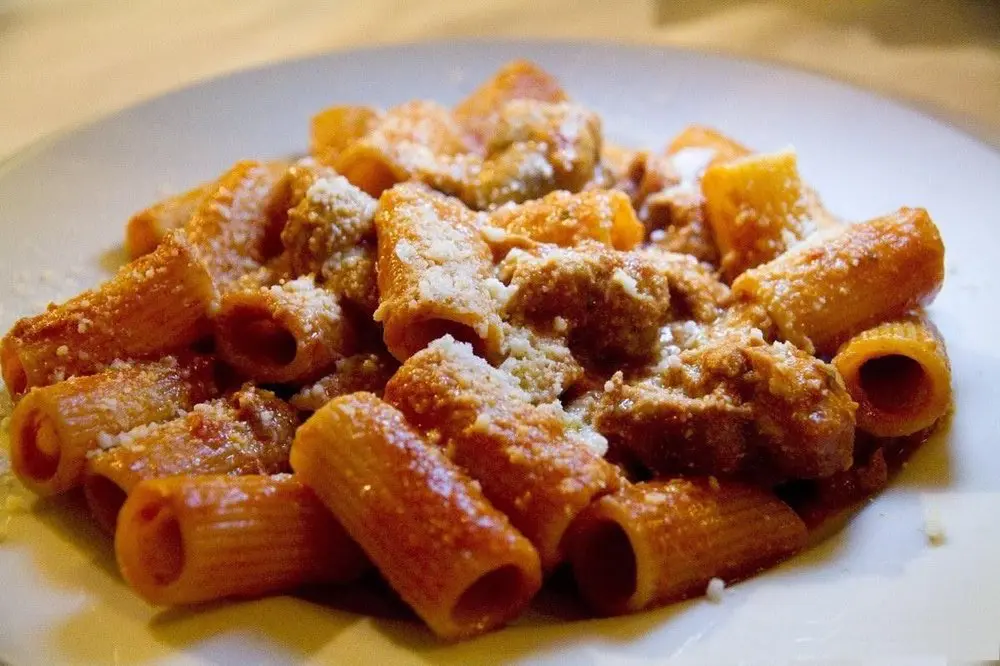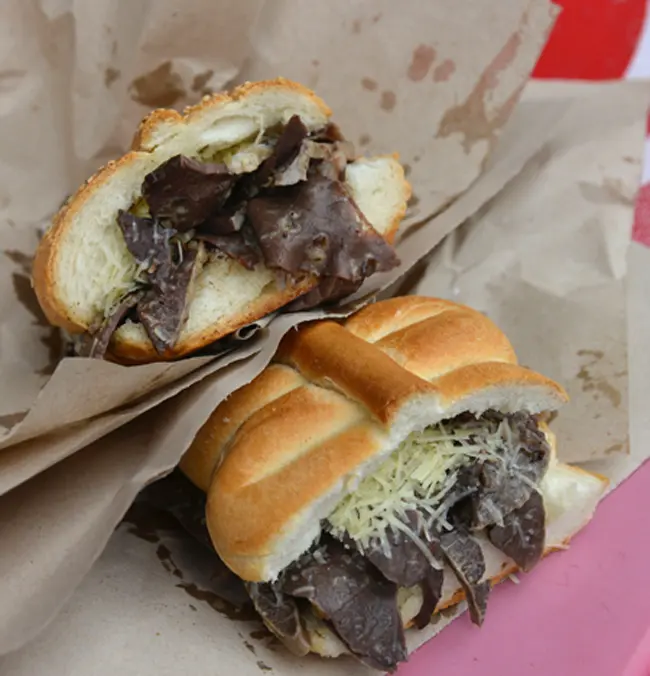Italy. Feels like it hardly needs any introductions, right? It’s “a seductively enamouring country where you can find the most extraordinary of pleasures in the most ordinary, simple things”, as the late Anthony Bourdain once described it. And by “pleasures” he was, of course, mainly referring to the food, the scenery and the ubiquitous need to raise one’s voice for no particular reason. Us Italians have always prided ourselves for being Il Bel Paese, the Beautiful Country, and in many ways we are…. Maybe not The beautiful country but most certainly A beautiful country. Many dream to visit, others even dream of living in a perpetual state of Il Dolce Far Niente (the Italian art of doing absolutely nothing) but most certainly everyone is met with a state of shock once they actually start experiencing Italian reality.
Ok, maybe “shock” is a tad overdramatic (so Italian of me) but there are definitely certain traditions and aspects of Italians daily life and food that might be unexpected and might seem a tad odd even to the most experienced travellers, like the ones who understand and embrace the whole “no cappuccino after 11AM” rule (dull, I know). So without further ado, let’s explore 3 things you shouldn’t expect in Italy!
THE BILL
Gross, right? Yeah we don’t like it either. But that’s not the issue here: Imagine you’re at a restaurant, and after having treated yourself to your tasty main course, you’re sitting down, just chit chatting away waiting for waiter Josh to bring you your dessert. Josh arrives, dessert and bill in hand; you eat, you pay, you’re out. Sounds like a pretty common night out?
Fast forward a few months and you’ve just finished eating a 56 course meal at an Italian trattoria. You’re ready to call it a night at this point, so you’re sipping your ammazza caffé away, patiently waiting for the bill you expected Marcello to bring with dessert over 2 hours ago. Confused? Here’s the deal: in Italy, it is considered extremely rude for a waiter/waitress to bring you the bill without you having asked for it. You can sit for hours on end and the staff won’t dare bring you the check out of their own initiative. Sounds a bit weird I know, but in reality it’s a kind gesture that is designed to not make the client feel rushed. We like hanging out after dessert to talk, and that talking often leads to maybe ordering something else.
From the perspective of an Italian, it might look like Josh is pressuring you to get the hell out of the restaurant, and from the perspective of someone coming to Italy, it might look like Marcello is ignoring you. Rest assured, it is not the case for either! Just remember: “When in Rome, do as the Romans do”. The same goes for us Italians, of course.
Although I must admit, it’s kind of hard to enjoy your dessert with the bill looking straight into your eyes, reminding you that your wallet will be lighter in a few minutes…
QUEUING
Ah, the queue. One of the few peaceful moments in a person’s day where they get to meditate and think about life. Nevertheless, the Italian Queue (notice the caps) is… you guessed it, a form of art. It’s one of those things you can notice right away and think “hey, look everyone: Italians”. Case in point: The airport. Say you’re running late for your flight to Italy and you’ve barely made it past TSA. Now you’re rushing trying to locate your gate, thinking you’ll never find it. Rest assured, it is one of the easiest tasks in the world. If you see people waiting neatly and tidily in straight lines in front of gates… don’t even bother looking at the destination on the screen. Basically, if you’re going to Italy don’t expect an actual queue.

What you are looking for is something along the lines of a shepherd-less herd yelling and complaining about how that particular type of pasta they ate at the airport restaurant should never be used with that particular type of sauce; yes, you have located the infamous Italian coda. Before even attempting to fare la coda, or queueing, you must take a few minutes to understand its structure and characteristics.
-La Coda 101
First of all, Coda is literally the tail that is often present on animals.
So by its very definition, la coda is anything but static. It moves, from left to right.
The Italian coda is lively, just like the people who wait in it.
But beware, the coda hides many traps. The most dangerous one is il furbo,
the clever guy who tries to steal your spot in the line.
They’re everywhere and cannot be profiled: young, old, male, female, anyone can be un furbo.
So remember to firmly stand your ground. Apart from this small inconvenience,
the coda is an experience that everyone should try at least once in their lives.
While they wait (not so patiently), Italians absolutely LOVE talking (or complaining) about stuff.
Anything. Especially food, football and politics. Enjoy!
PIZZA, PASTA, BASTA
Basta means enough. Seriously. Is this all that inspires people to come visit us? Really, we don’t even eat pizza or pasta that often! I can’t even remember the last time I ate either (I’m not counting today’s lunch and yesterday’s dinner).
Fine, maybe we do consume quite a bit of both, but Italian cuisine is so much more than carbs. How else do you think we manage to fit in those tight jeans and slim shirts? What I’m saying is: don’t expect to ONLY find pasta and pizza. Now, I’m not gonna list all of the incredibly delicious (and healthy) delicacies you can find in all regions, because that would take a whole quarantine to write and another one to read and honestly it’s a lot more fun to discover these dishes by eating them! What I am gonna provide, however, is a list of some of the weirdest dishes you can find so you get an idea of the vast array of raw materials we actually use.

Pajata
Pajata is basically the cooked intestines of unweaned calves. Don’t be grossed out yet (or if you’re in a rush, skip to the last paragraph). This is one of the cornerstones of Rome’s quinto quarto tradition (this translates to fifth quarter, and covers anything that involves the cooking of animal entrails and guts). You can consume it in tomato sauce alone, in tomato sauce over rigatoni or simply grilled.
Pane Ca’ Meusa
If you’re in Sicily and feel like venting your spleen at someone for cutting you off in line, take a breath, and head on over to the nearest Pane Ca’ Meusa stand to enjoy a rare delicacy. Typical of Palermo, Pane Ca’ Meusa is quite literally a spleen sandwich; beautifully fried slices of spleen and lung paired with caciocavallo cheese (optional). Maybe not for the faint of heart, but its flavours are so rich and decadent you’ll probably wonder why you haven’t tried it before.


Casa Marzu
The people of Emilia-Romagna will tell you that their Parmigiano-Reggiano is the king of all cheeses, but to many Italians, that title belongs to Casa Marzu.
It is also the most illegal of all cheeses, which makes it all the more fun, right? Casu Marzu is a typical aged cheese from the island of Sardinia. Chances are you’ve heard of it but if you haven’t, here’s what we’re dealing with: this cheese is the product of larvae-driven fermentation.
Cheesemakers begin the process as they would any other cheese and once the sheep’s milk is placed into wheels, the cheesemakers dig a small hole in them and leave them to rest outside. Foodie flies—or Piophila casei, to be exact— can’t get enough of this thing, so they slip in through the opening and lay eggs. The process of life… It’s beautiful, isn’t it? In the end, you basically end up with a maggot infested cheese. I still can’t figure out why they’ve made it illegal to sell though (some local farmers still love making and eating it).
Maybe Italy doesn’t doesn’t need an introduction, but what’s certain is that like everyone else, we have traditions, customs and habits that might seem weird to others. We live in strange times, and getting to experience and acknowledge differences should be, now more than ever, an honour for us travelers. This list is by no means exhaustive. It is just a taste of the unexpected, which I’m sure we’ll all be able to re-experience in the near future. So, when the time comes, leave the fear of the unknown behind and let the thrill of discovering what’s to come guide you through your travels.
Enrico is one of our Rome-based city hosts. His international upbringing makes him well-attuned to the needs of a traveler in an unfamiliar country.